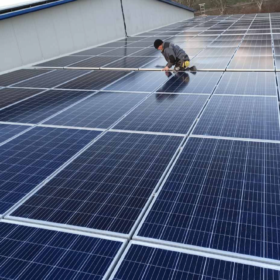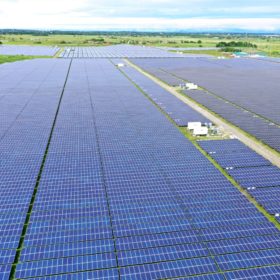Australian green hydrogen innovator to flip coal-fired fleet in the Philippines
Australia’s Star Scientific has signed a deal with the Department of Energy in the Philippines to use its hydrogen tech. The partnership could see Star Scientific transform every coal-fired power plant in the nation to green hydrogen, while also using the tech to provide desalinated water.
IFC says green recovery could drive $2.5tn renewables market this decade
The private-sector arm of the World Bank, which claims to leverage $3 of its own capital and $8 from third parties for every dollar invested in its blended finance funds, has attempted to quantify what devoting Covid recovery funds to green investment would mean for emerging economies.
Philippines to host 1 GW of solar under PPAs
Solar Philippines is planning to deploy several unsubsidized solar plants in the provinces of Batangas, Cavite, Nueva Ecija, and Tarlac.
Scatec to drop the ‘Solar’ with hydro acquisition
The renewables business is set to acquire the SN Power hydropower operator belonging to Norwegian state-owned private equity business Norfund, with the $1.17 billion deal expected to go through in the first half of the new year. Scatec said the transaction could offer floating solar opportunities.
IRENA presents $2tn plan to drive 5.5m renewables jobs by 2023
Doubling down on renewable energy investment and energy transition spending is required to ensure a truly green global recovery from the Covid-19 crisis and its economic aftershock, claims the International Renewable Energy Agency.
Three 1.2 GW solar projects under development in the Philippines
There are at least three PV projects exceeding 1 GW in size that are now under review in the Philippines, according to data from the country’s Department of Energy
Daily news round-up: Philippines could be set for 1.5 GW more solar and Tesla CEO has been dreaming of electric flight
Plus, details have been revealed of a 2 MW/2.5 MWh grid scale storage demo project in Switzerland and for a peer-to-peer renewable energy certificate marketplace in Southeast Asia.
Philippines’ nexus approach for water and solar power supply
The country’s National Irrigation Administration will bet on floating PV and solar-powered irrigation to improve water and energy supply. The Pantabangan and Casecnan dams, in the province of Nueva Ecija in the Central Luzon region, have been identified as ideal locations for floating solar.
Covid-19 pandemic puts 150 GW of PV, wind at risk in Asia
Up to 150 GW of PV and wind projects could be postponed or canceled throughout the Asia-Pacific region by 2024 if the coronavirus-triggered recession continues beyond the current year, according to new research by Wood Mackenzie.
Covid-19 weekly briefing: A cold wind for APAC renewables, respite for Indian developers and another salary cut for SunPower execs
The coronavirus epidemic continues to batter the global economy, including the solar industry, but falling demand during lockdowns has brought negative energy prices as well as helping drive record solar generation, amid less-polluted skies.










